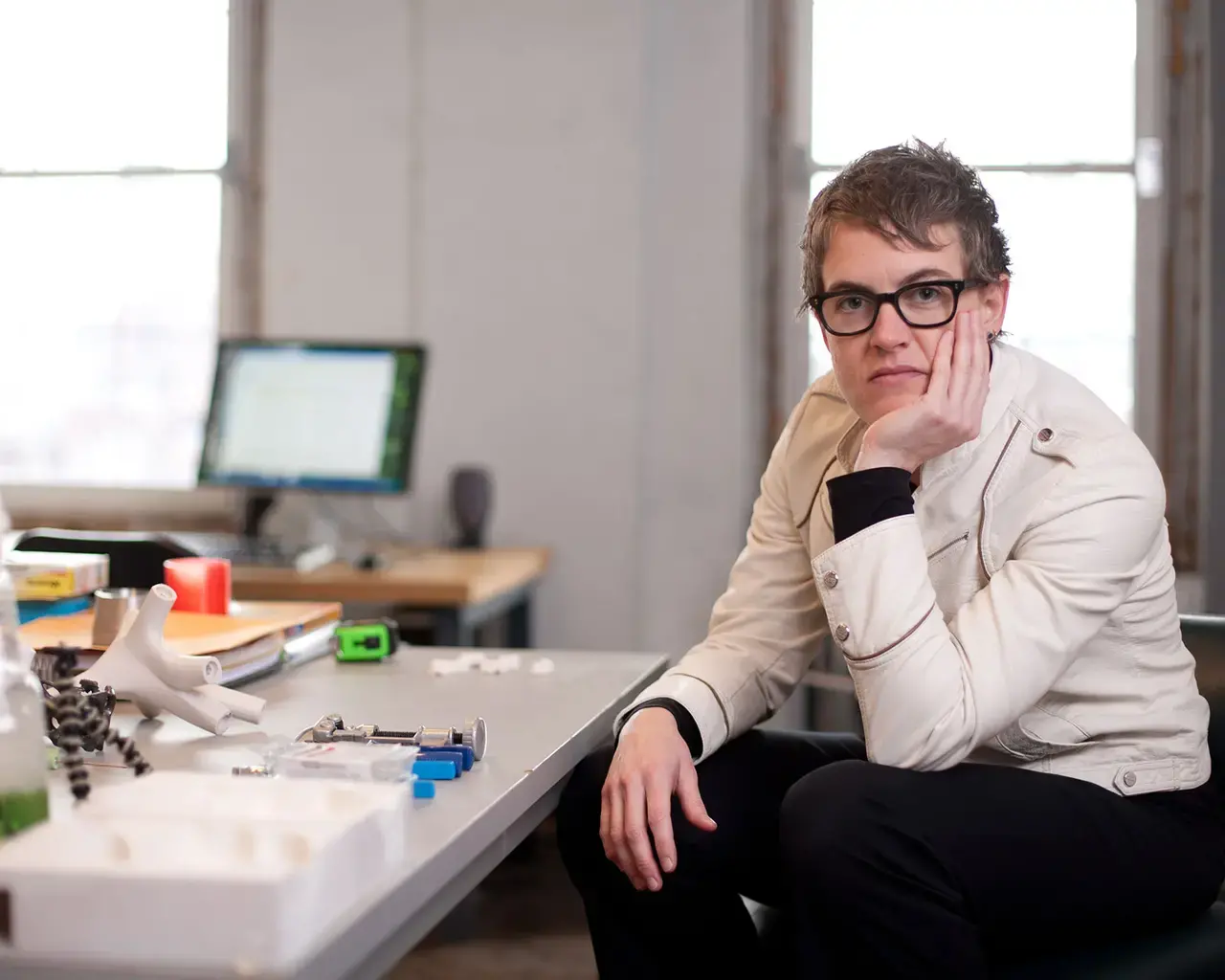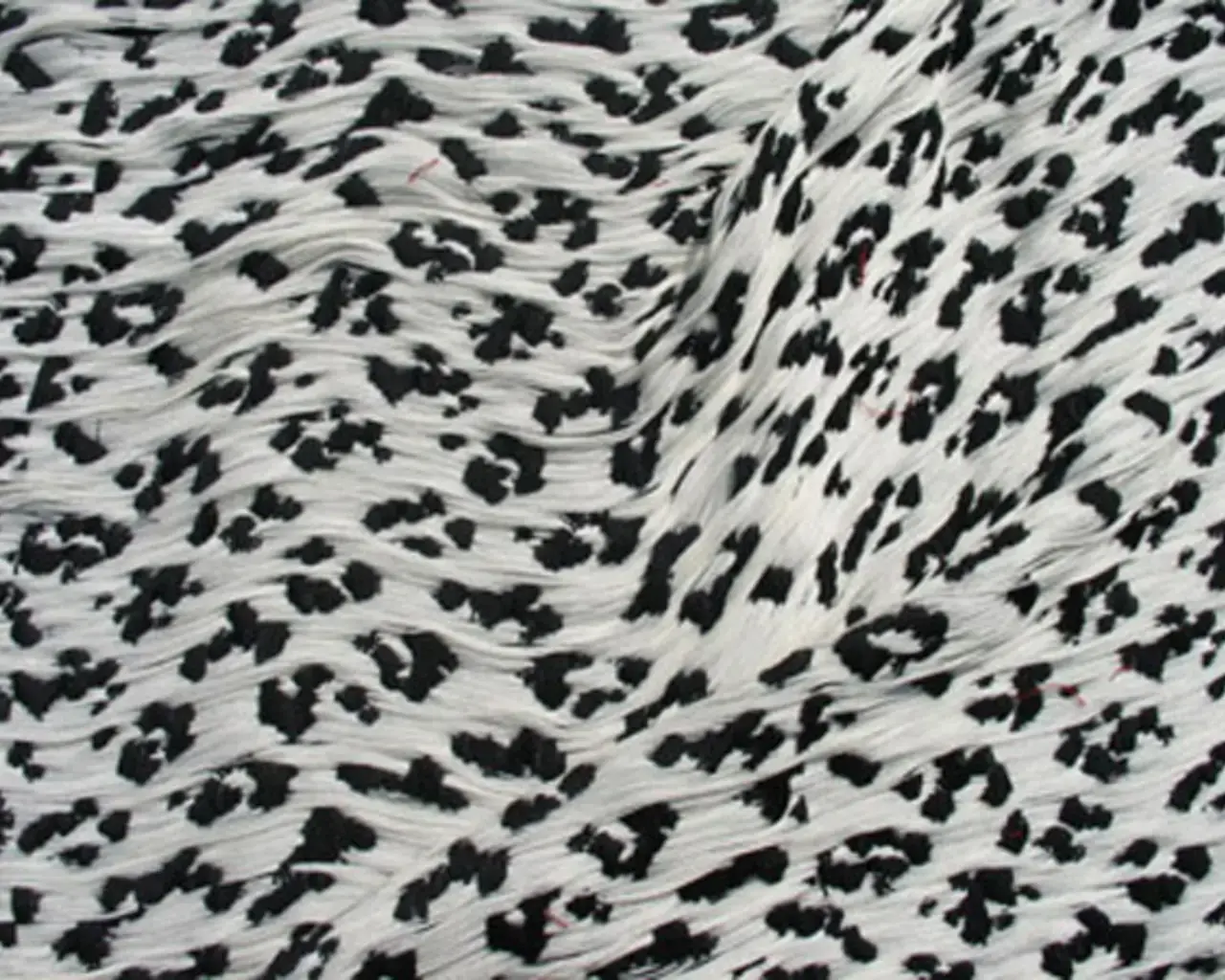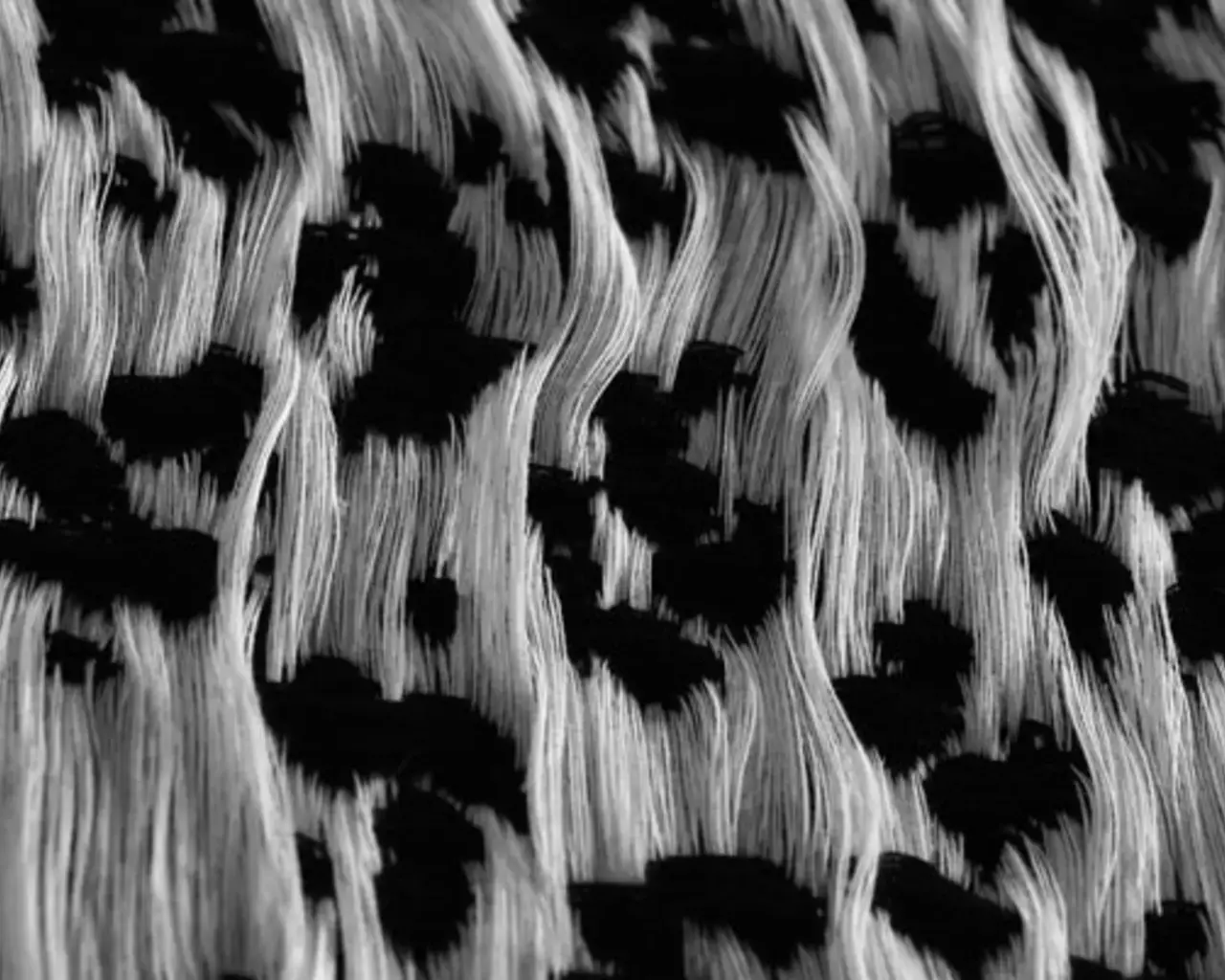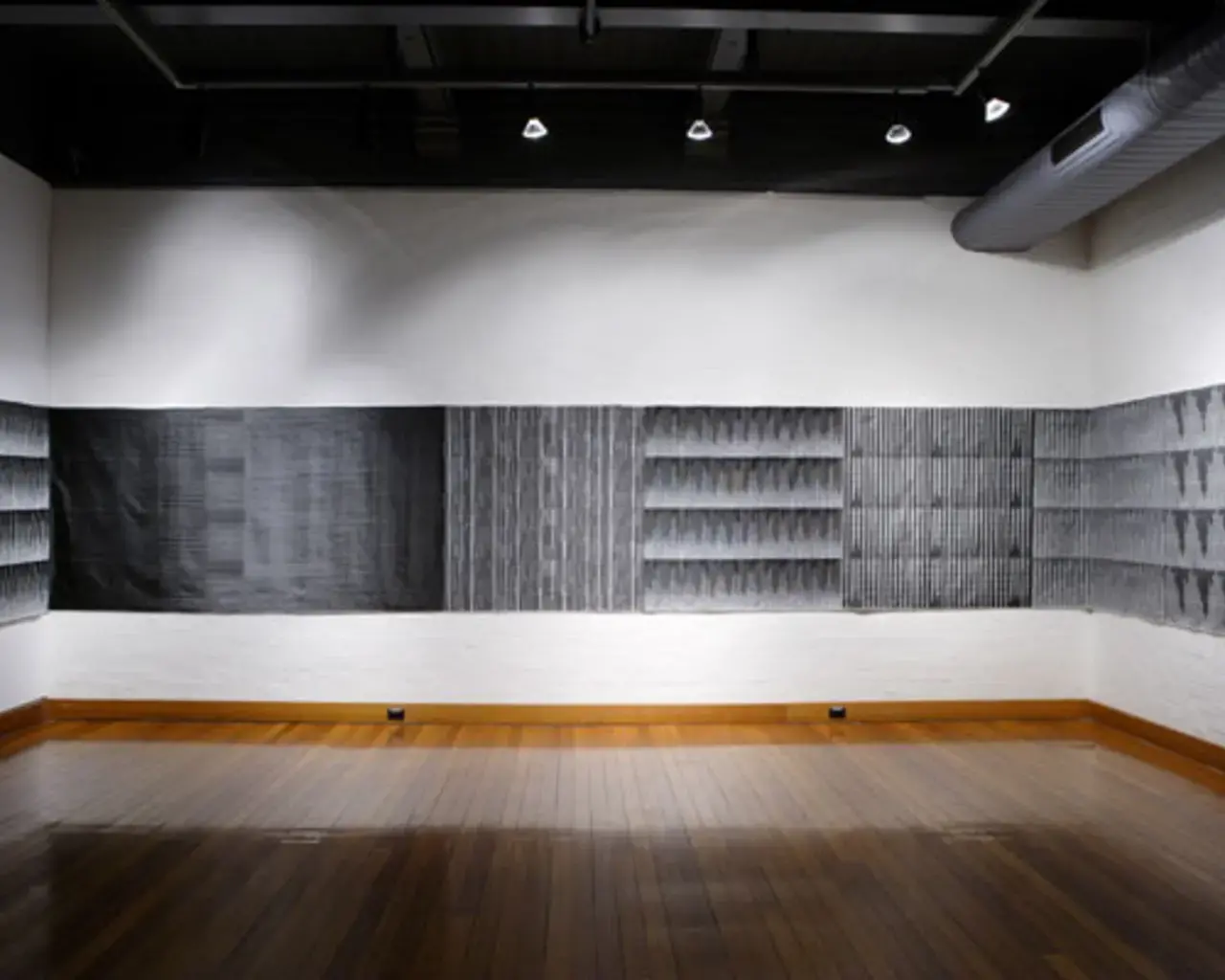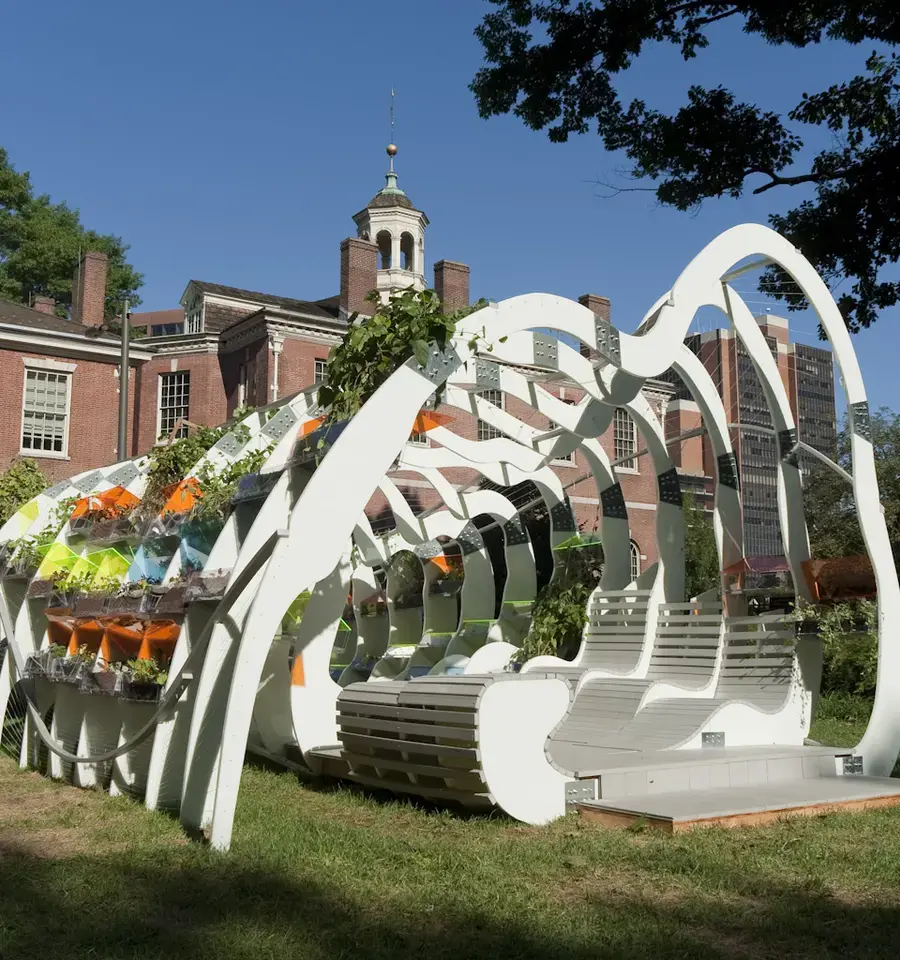"My work engages the human body in the material realm at the point the seemingly intangible is made readily accessible to diverse audiences. It focuses on the contextual, material, and formal intersections between art, architecture, textile tectonics, and biology."
"Looking to nature for design inspiration is not a new idea," says architect and designer Jenny Sabin. Sabin's work, however, is at the forefront of a new direction for 21st-century architectural practice—one that investigates the intersections of architecture and science, and applies insights and theories from biology and mathematics to the design of material structures. Sabin is the co-founder and co-director of Sabin+Jones LabStudio, a hybrid research and design unit at the University of Pennsylvania, where architects, mathematicians, scientists, and cell biologists collaborate to analyze living biological systems and develop new insights into ecological design in architecture. Her design work, already on a radically different scale from others in the field, is extremely relevant during a time of environmental crisis, when energy conservation and optimization are major global concerns. In fall 2011, Sabin designed a large-scale, environmentally-sophisticated greenhouse for the American Philosophical Society Museum's The Greenhouse Projects, which was made possible with support from The Pew Center for Arts & Heritage.
